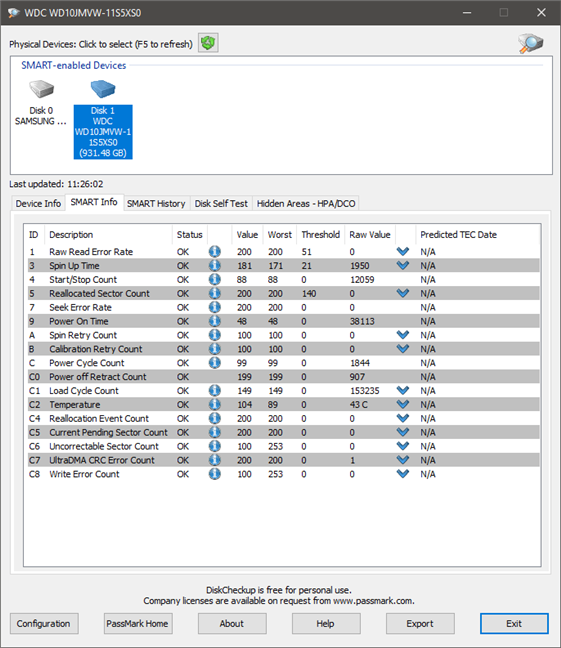

- #Ssd health status install
- #Ssd health status full
- #Ssd health status windows 10
- #Ssd health status Pc
If you don’t, press the Win key, type “device manager,” and click when it appears in the search results. If you know the make of your hard drive, you can skip this part. The first step to knowing which one to use is, of course, knowing the make of your hard drive. Most major hard drive manufacturers provide free robust tools to monitor your hard drive health and performance. You can also optimize your SSD on the Windows 11 defrag and optimize tool, though Windows 11 should be taking care of the process automatically.
#Ssd health status install
We actually found that the free app Defraggler does a better job of detecting and reducing fragmentation, but not everyone wants to install extra apps when the functionality is built right into the OS. Select your drive and click “Optimize.” This runs a scan for fragmented files and optimizes the drive for better performance. Open “Search” and type “disk defrag.” Choose “Defragment and Optimize Drives.” You can do this using Windows 11’s built-in defrag tool. If you feel like your non-SSD hard drive is slowing down, then you should check to see how fragmented it is. SSDs work a little differently, and while they never need defragmentation (because fragmentation relates to where the data is physically stored on the drive, which isn’t a factor on SSD), they do sometimes need optimizing. Traditional SATA hard drives may have largely made way for much faster solid-state drives, but they’re still very popular and remain an affordable way to store things like pictures, videos and other non-strenuous file types. On Dell and HP laptops, you should be able to check hard drive health by going to the BIOS and looking for “Diagnostics.” While you’re in the BIOS, it’s also a good place to see whether the hard drive you want to check is actually being detected by your PC/motherboard. On my MSI Mortar WiFi B550M in the BIOS, I can go to “Settings -> Advanced -> NVME self-test” to test the health of my NVMe drives. Once in the BIOS, the exact instructions will depend on your motherboard manufacturer.
#Ssd health status windows 10
You can also set Windows 10 to boot directly into the BIOS. Reboot your PC, and after it’s switched off and on again repeatedly, pressing Delete, F2, F12, or whichever button the boot screen tells you, will take you to your BIOS. You can use all or just one of the methods we’ve listed below, depending on your preferences.Īs long as you’re using a relatively modern motherboard, you can run hard drive checks in the BIOS, free from any OS-based interference. There are various ways to check this – from built-in methods in Windows to your HDD manufacturer’s diagnostic tools. For this reason, it’s important to check your hard disk health in Windows 11.
#Ssd health status Pc
While most PC components can be replaced, the invaluable data on your hard drive can’t unless you have a recent backup. All the aforementioned features are quickly accessed through the apps easy-to-navigate interface.Your hard drive is the soul of your PC, the place where all your most important data is stored.

Lastly, you can easily obtain the current system information for your SSD. It additionally has SSD optimization features that provide TRIM service on free space of the drive and OS Optimization which offers simple settings for SSD optimization.


#Ssd health status full
It also provides two options for diagnostics, Quick Diagnostics, which will run basic tests on free space of the selected drive, and Full Diagnostics, which runs a read test on all used space of the selected drive.ĪDATA SSD ToolBox also has SSD utilities that include Security Erase, Firmware update, SSD Toolbox upgrade, and export log. TIP: Hard to fix Windows Problems? Repair/Restore Missing Windows OS Files Damaged by Malware with a few clicksĪDATA SSD ToolBox allows you to obtain assigned drive information including capacity, used space on a drive, drive temperature, drive health, and lifespan of the drive.


 0 kommentar(er)
0 kommentar(er)
